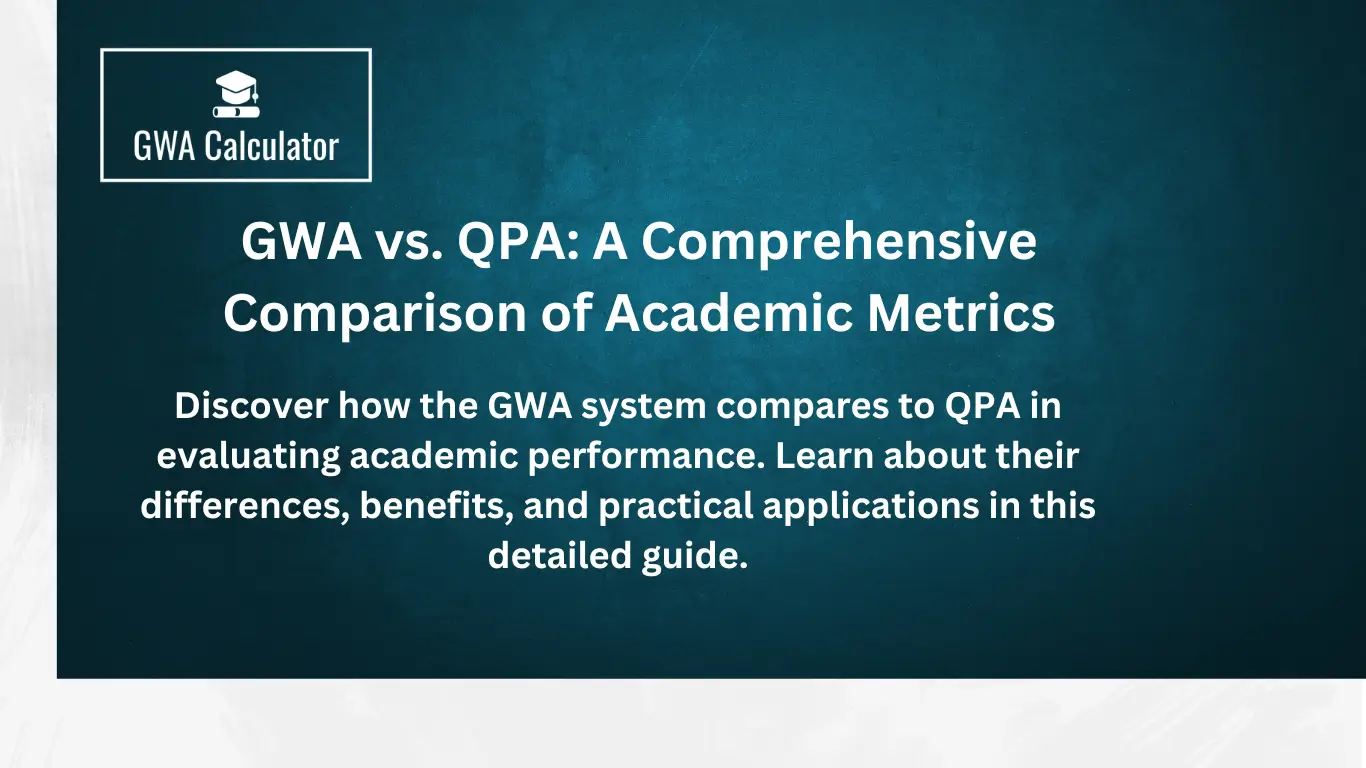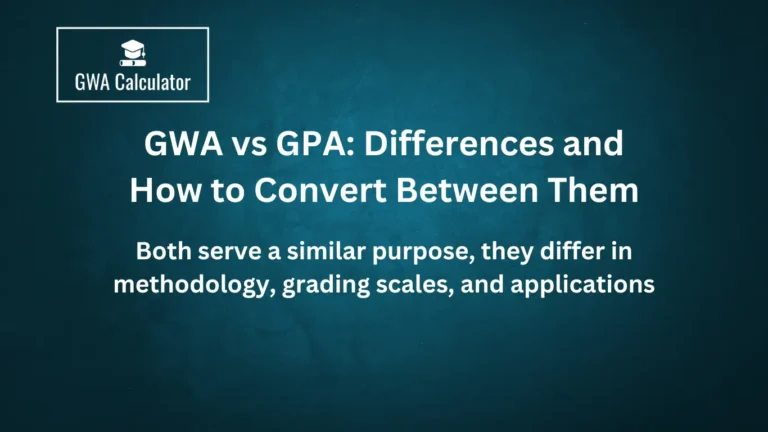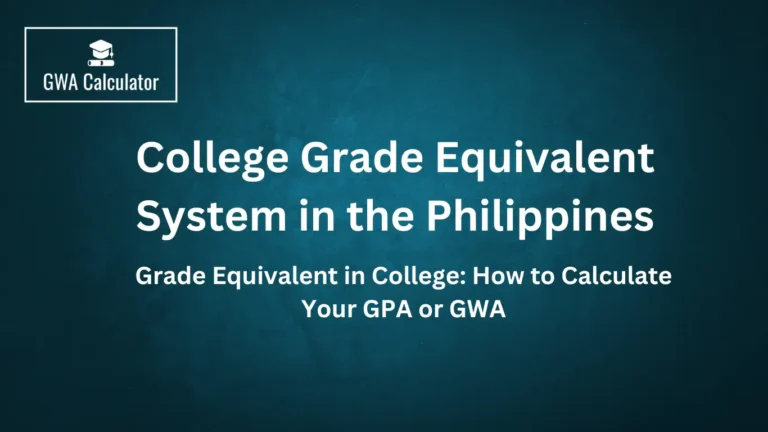How the GWA System Compares to Other Academic Metrics Like QPA
In the academic world, assessing a student’s performance is crucial for educational institutions, employers, and the students themselves. Two of the most recognized metrics for evaluating academic success are the General Weighted Average (GWA) and the Quality Point Average (QPA).
While both serve similar purposes, they differ in methodology, focus, and applicability. This article will dive deep into the differences, similarities, and relevance of the GWA and QPA, helping students and educators better understand their implications.
What is the General Weighted Average (GWA)?
The General Weighted Average (GWA) is a metric commonly used in countries like the Philippines to measure a student’s academic performance. It calculates the average of grades, factoring in the credit weight of each subject. The GWA is usually expressed as a number, with lower values indicating better performance (e.g., 1.0 being excellent and 5.0 being failing).
Key Features of GWA:
- Grade Weighted: Subjects with higher credit units have a greater impact on the overall average.
- Scale Variation: Often uses a 1.0 to 5.0 scale, though some schools may vary slightly.
- Cultural Relevance: Primarily used in the Philippines and other Southeast Asian educational systems.
What is the Quality Point Average (QPA)?
The Quality Point Average (QPA) is a metric more commonly used in the United States and other Western countries. It evaluates a student’s performance on a 4.0 scale, assigning quality points to grades earned in courses and then averaging them based on credit hours.
Key Features of QPA:
- Point-Based System: Grades are converted into quality points (e.g., A = 4.0, B = 3.0).
- Cumulative Average: Includes all courses taken, weighted by credit hours.
- Widely Adopted: Standard in the U.S. and recognized internationally.
Key Differences Between GWA and QPA
1. Grading Scale
- GWA: Uses a descending numerical scale (e.g., 1.0 as the highest grade).
- QPA: Operates on an ascending 4.0 scale where higher values indicate better performance.
2. Weighting System
- GWA: Weighting depends on the credit units assigned to each subject.
- QPA: Focuses on quality points derived from letter grades, multiplied by credit hours.
3. Regional Usage
- GWA: Predominantly used in Southeast Asia.
- QPA: Standard in Western countries and accepted globally.
4. Flexibility
- GWA: Often rigidly tied to institutional grading standards.
- QPA: Offers flexibility in interpretation due to international familiarity.
5. Interpretation and Conversion
Converting GWA to QPA or vice versa can be challenging due to the differences in scales and methodologies. For example, a GWA of 1.75 might equate to a QPA of 3.5, depending on institutional conversion tables.
Benefits of Each System
GWA Advantages
- Detailed Evaluation: Offers a granular view of performance.
- Custom Fit: Aligns well with regional grading practices.
- Credit Sensitivity: Ensures that more important courses carry greater weight.
QPA Advantages
- Global Recognition: Easier to interpret across borders.
- Standardized Format: Simplifies comparisons between institutions.
- Compatibility: Works seamlessly with international application systems.
Practical Example: Comparing GWA and QPA
Consider a student who has taken three courses:
| Subject | Grade (GWA Scale) | Grade (QPA Scale) | Credit Hours | |
|---|---|---|---|---|
| Mathematics | 1.5 | A (4.0) | 3 | |
| Literature | 2.0 | B (3.0) | 2 | |
| Science | 1.75 | A- (3.7) | 4 |
- GWA Calculation:
- (1.53 + 2.02 + 1.75*4) / (3+2+4) = 1.72 (GWA)
- QPA Calculation:
- ((4.03) + (3.02) + (3.7*4)) / (3+2+4) = 3.74 (QPA)
This example illustrates how the two systems yield comparable yet distinct evaluations.
Tips for Students Navigating Both Systems
- Understand the Scales: Familiarize yourself with the grading scales used in your institution.
- Leverage Conversion Tools: Many universities provide tools to convert GWA to QPA.
- Maintain Consistency: Focus on excelling in subjects with higher credit weights.
- Prepare for International Applications: If planning to study abroad, ensure your transcript includes both GWA and QPA equivalencies.
FAQs
1. Are GWA and QPA interchangeable?
No, they differ in methodology and interpretation, although they serve similar purposes.
2. Can I convert GWA to QPA for international applications?
Yes, but you may need assistance from your institution to ensure accuracy.
3. Which is better for job applications?
Both are equally valuable; it depends on the region and industry standards.
Conclusion
Both GWA and QPA are effective tools for assessing academic performance, each with its unique features and regional applications. While GWA provides a detailed and credit-sensitive analysis, QPA offers global recognition and standardization.
Understanding these systems can help students navigate academic requirements and future opportunities more effectively. Whether you’re planning to study locally or internationally, knowing how these metrics compare will serve as a vital advantage.







